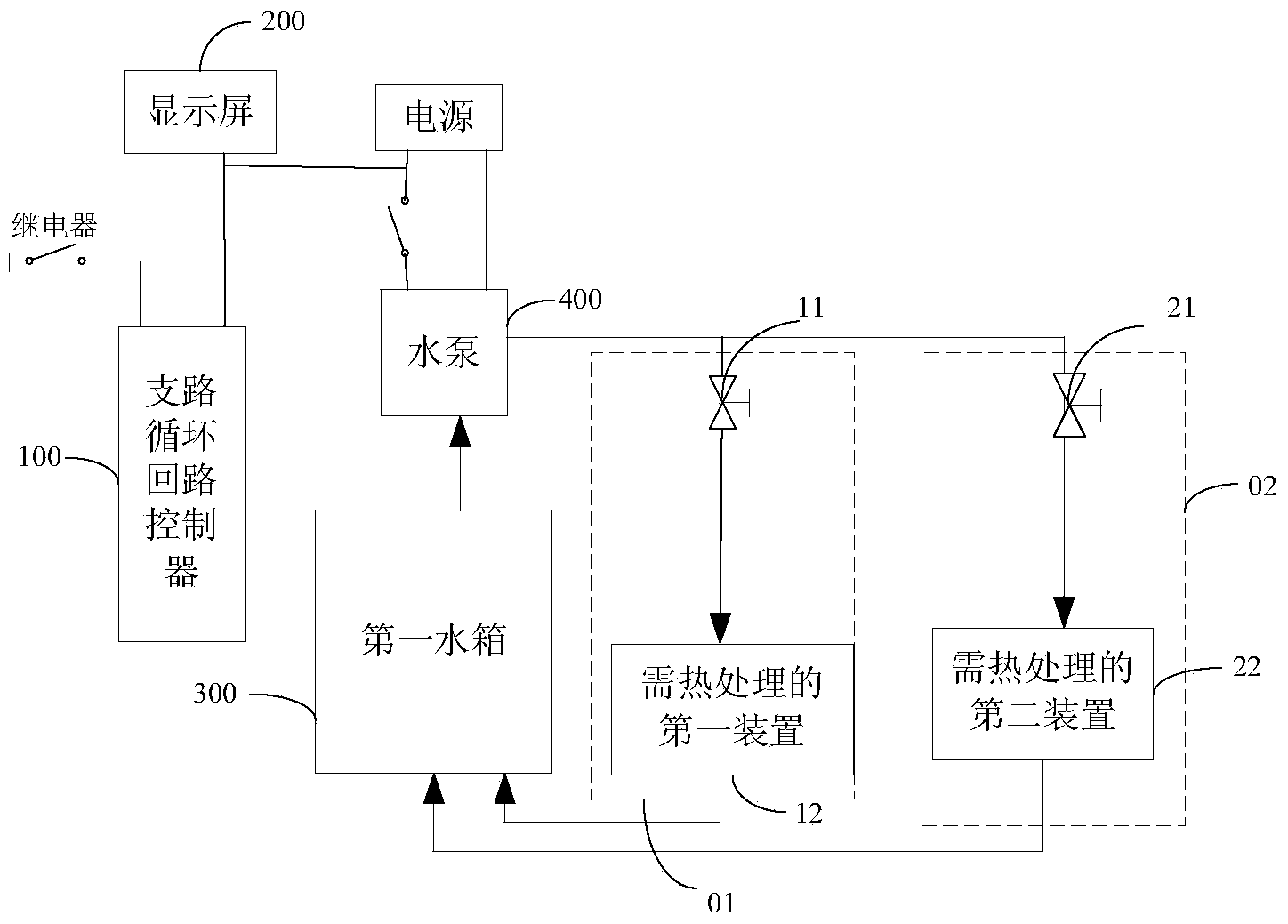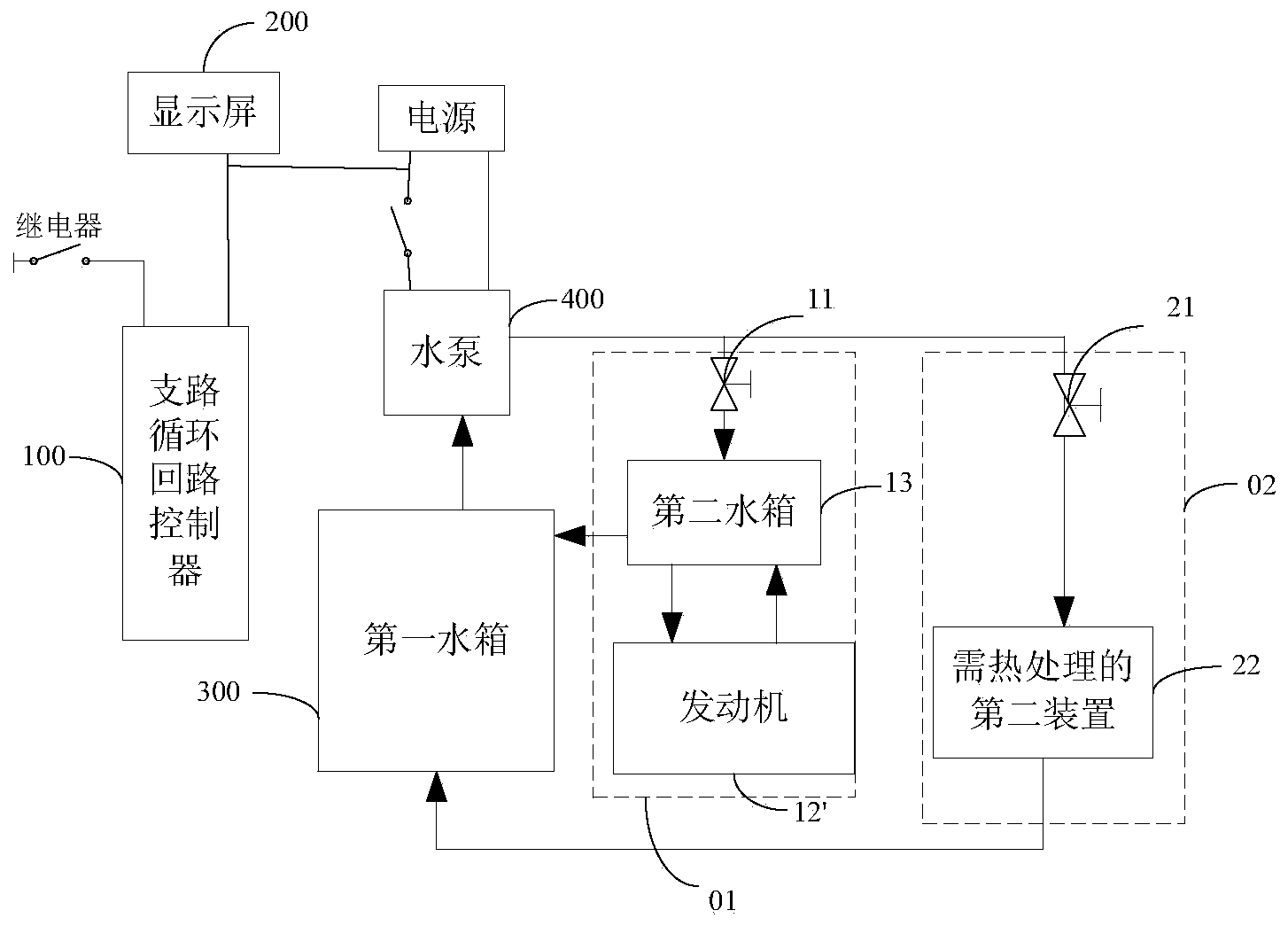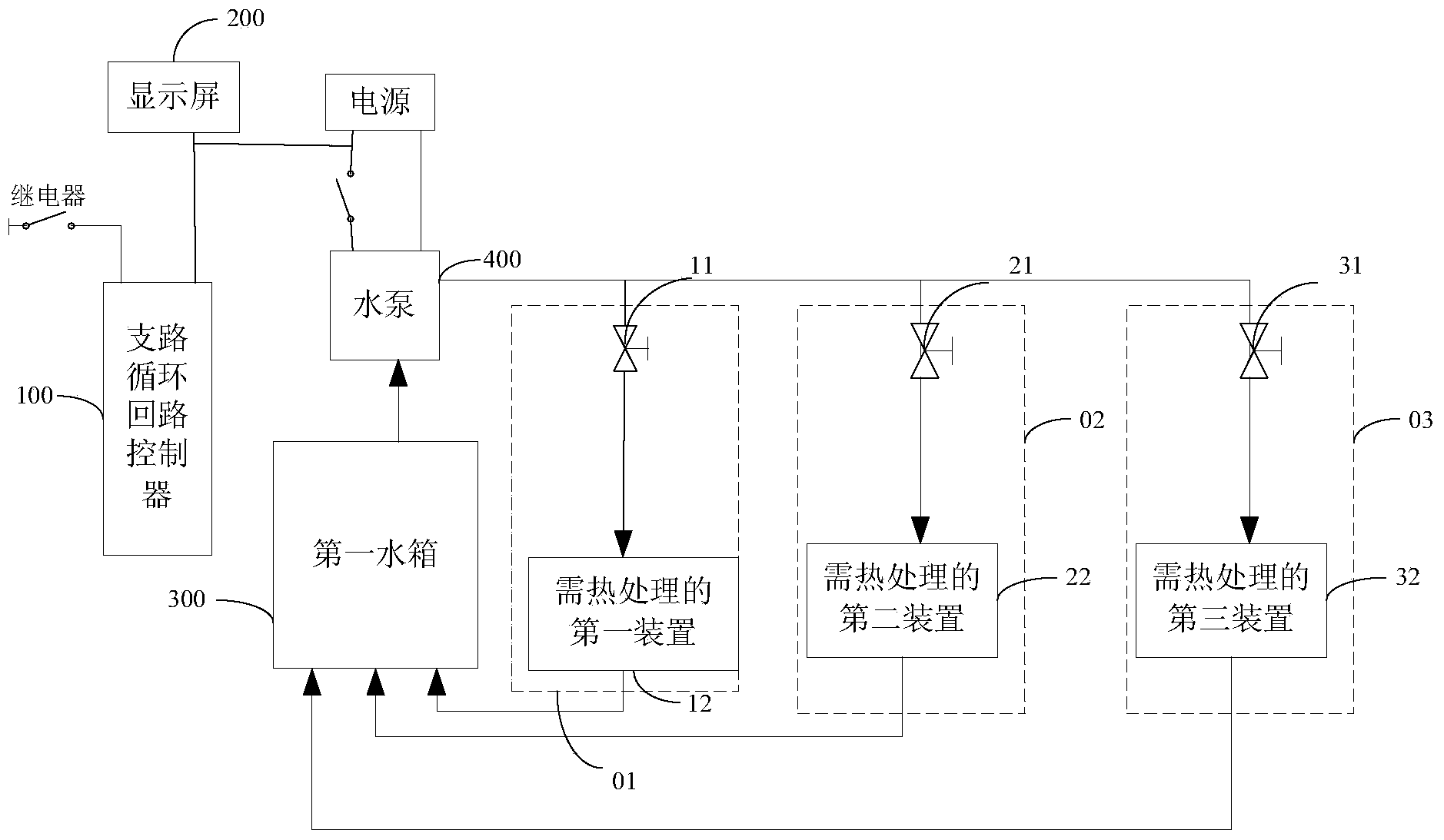Heat management control system and method and device for controlling branch circulation loops
A circulation loop and control system technology, applied in the direction of measuring devices, instruments, machine/structural component testing, etc., can solve the problems of occupying a large laboratory area and high equipment cost
- Summary
- Abstract
- Description
- Claims
- Application Information
AI Technical Summary
Problems solved by technology
Method used
Image
Examples
Embodiment Construction
[0035] In order to make the above objects, features and advantages of the present invention more comprehensible, specific implementations of the present invention will be described in detail below in conjunction with the accompanying drawings.
[0036] Such as figure 1 The thermal management control system shown is applied to a bench test of a hybrid powertrain, and includes a branch circuit loop controller 100, a display screen 200, a first water tank 300, a water pump 400, and a first water outlet pipe connected to the water pump 400. A branch 01 and a second branch 02, the first branch 01 is provided with a first throttle valve 11 and a first device 12 requiring heat management, and the second branch 02 is provided with a second throttle valve 21 and a second device 22 requiring thermal management. In order to form a water circulation loop, the various components are connected by water pipes. This water pipe can be hard pipe, also can be flexible pipe. Wherein, the branc...
PUM
 Login to View More
Login to View More Abstract
Description
Claims
Application Information
 Login to View More
Login to View More - R&D
- Intellectual Property
- Life Sciences
- Materials
- Tech Scout
- Unparalleled Data Quality
- Higher Quality Content
- 60% Fewer Hallucinations
Browse by: Latest US Patents, China's latest patents, Technical Efficacy Thesaurus, Application Domain, Technology Topic, Popular Technical Reports.
© 2025 PatSnap. All rights reserved.Legal|Privacy policy|Modern Slavery Act Transparency Statement|Sitemap|About US| Contact US: help@patsnap.com



